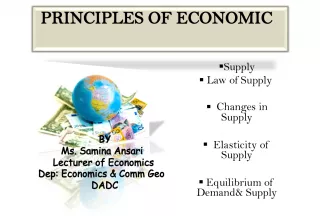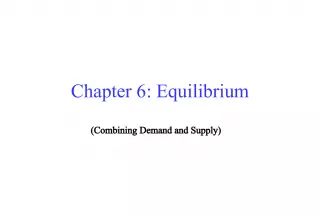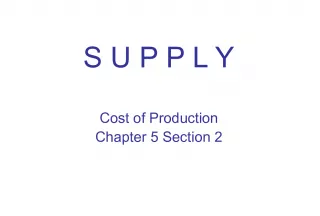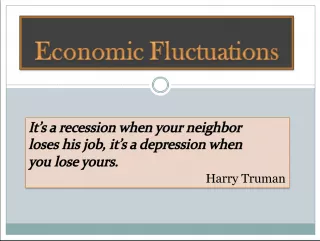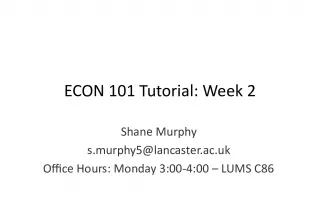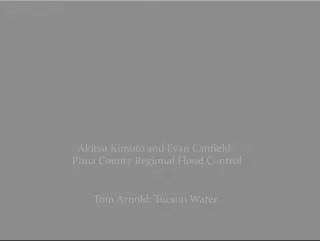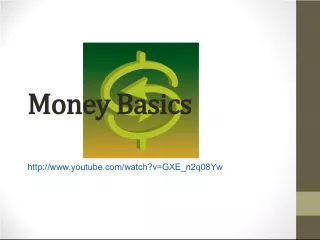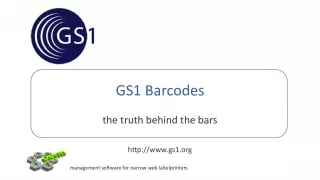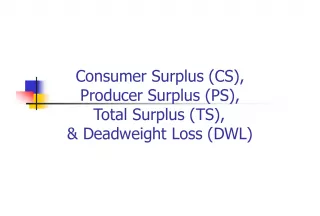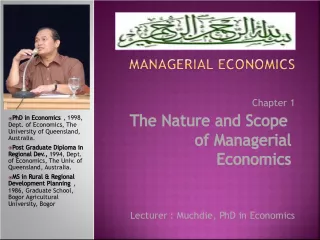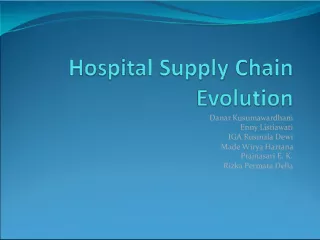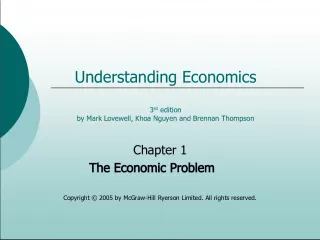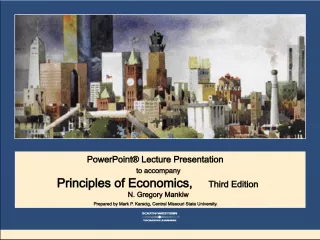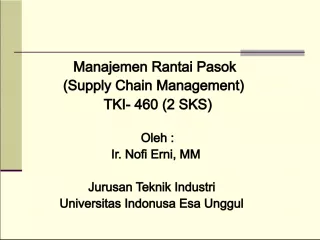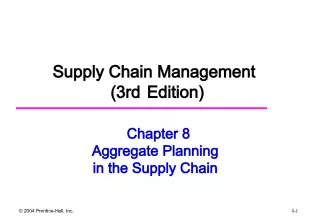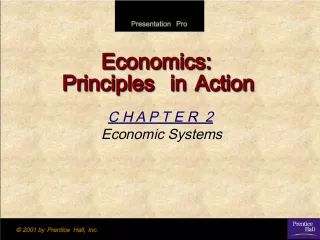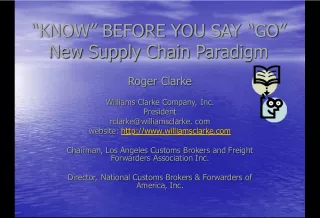Understanding the Basics of Demand and Supply in Economics
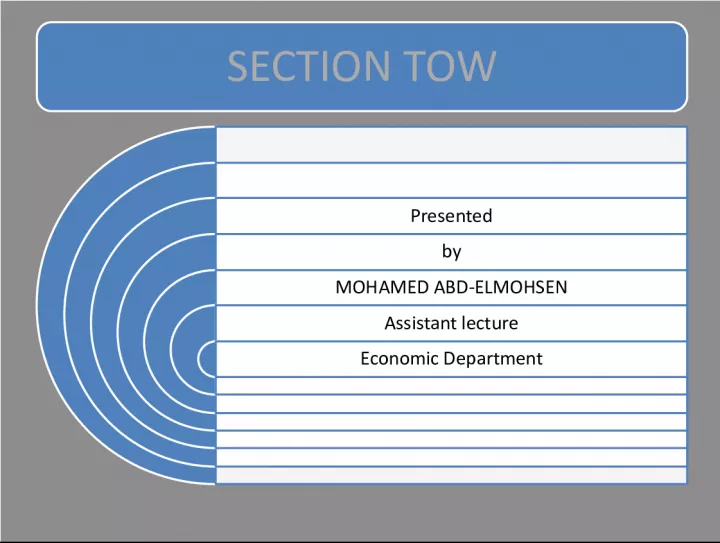

In this presentation, assistant lecture Mohamed Abd ElMohsen reviews chapter three, covering the law of demand, law of supply, differentiating between change in demand and quantity of demand and market equilibrium.
- Uploaded on | 7 Views
-
 zaleledner
zaleledner
About Understanding the Basics of Demand and Supply in Economics
PowerPoint presentation about 'Understanding the Basics of Demand and Supply in Economics'. This presentation describes the topic on In this presentation, assistant lecture Mohamed Abd ElMohsen reviews chapter three, covering the law of demand, law of supply, differentiating between change in demand and quantity of demand and market equilibrium.. The key topics included in this slideshow are Demand, Supply, Law of Demand, Law of Supply, Change in demand, Change in quantity of demand, Market Equilibrium,. Download this presentation absolutely free.
Presentation Transcript
1. SECTION TOW Presented by MOHAMED ABD-ELMOHSEN Assistant lecture Economic Department
2. Out line We will review chapter three such as: 1-law of Demand 2- the different between change in demand(shift) & change in quantity of demand 3- law of supply 4 - the different between change in supply (shift) & change in quantity of supply 5 - Market Equilibrium
3. 1- What is the different between change in demand & change of Quantity of demand ? Change in demand (shift) Change in quantity of demand The reason : change in other factor , price The reason : change in price 1. The prices of other goods Substitute of CD demand (increases) Complement demand(decrease ) 2. Expected future prices, (direct) 3. Income, (direct) 4. Population, and (direct) 5 . Preference The law of demand states: Other things remaining the same, the higher the price of a good, the smaller is the quantity demanded.
4. 2- some important Definition Definition Explanation normal good is one for which demand increases as income increases inferior good is a good for which demand decreases as income increases. Substitute good is a good that can be used in place of another good. (coffee& tea- PC & Lap- Complement good is a good that is used in conjunction with another good. ( CD& PC- SUGER& tea- )
5. 3 - What is the different between change in demand & change of Quantity of demand ? Change in supply (shift) Change in the quantity of supply When one of the other factors that influence selling plans changes, there is a change in supply and a shift of the supply curve Such as 1- Prices of productive resources 2- Prices of related goods produced 3- Expected future prices 4- The number of suppliers 5- Technology When the price of the good changes and other influences on selling plans remain the same, there is a change in the quantity supplied and a movement along the supply curve. 1- only price
6. 4:Use graph to explain Market equilibrium: This Graph illustrates the Market Equilibrium 1- about star point(Intersection) QD= QS 2- above this point there is a surplus QS < QD 3- under this point there is a shortage QS > QD This Graph illustrates the Market Equilibrium 1- about star point(Intersection) QD= QS 2- above this point there is a surplus QS < QD 3- under this point there is a shortage QS > QD P QD surplus QS Equilibrium shortage Demand & supply
7. 5- Assume the following market model: QD1990 = 1600 125P QD1991 = 1200 125P QD1992 = 1800 125P QS1990-1992 = 440 + 165P Calculate equilibrium prices and equilibrium quantities in 1990, 1991 and 1992.
8. 5- Calculate equilibrium prices and equilibrium quantities in 1990, 1991 and 1992. QD1990 = QS1990 1600 125P = 440 + 165P 1600- 440 = 165p +125p 1160=290p p= 4 Compensation in: QD1990 = 1600 125P So QD1990= 1100 QD1991 = QS1991 1200 125P= 440 + 165P 1200-440= 165p+125p 760= 290p P= 2.6 Compensation in: QD1991 = 1200 125P QD1991= 872.4 QD1991 = QS1991 1200 125P= 440 + 165P 1200-440= 165p+125p 760= 290p P= 2.6 Compensation in: QD1991 = 1200 125P QD1991= 872.4
9. Cont.. QD1992 = QS1992 1800 125P = 440 + 165P 1360= 290p P=4.6 Compensation in: QD1992= 1800 125P QD1992= 1225
10. 6- The table sets out the demand and supply schedules for tomato: Price (cent per crate) Quantity demanded (Million) Quantity supplied (Million) 50 160 130 60 150 140 70 140 150 80 130 160 90 120 170 100 110 180 a. Draw a graph of the tomato market and mark in the equilibrium price and quantity b. If the price is 50 cents a crate, is there a shortage or a surplus, and how does the price adjust ? c. If the quantity of tomato that people want to buy increased by 40 million crates per week at each price , how does the demand of tomato change? Explain ? d. If a virus destroys tomato and the quantity of tomato produced decreases by 30 million crate a week at each price , how does the supply of tomato changes? Explain ?
11. 6( a&)- Draw a graph of the tomato market and mark in the equilibrium price and quantity ? 6(B)- If the price is 50 cents acrate, isthere a shortage or a surplus, and how does the price adjust ? We note from this chart Equilibrium price = 65 Equilibrium Quantity= 145 B) if P = 50 , Its shortages about 30 millions
12. 6(C) - If the quantity of tomato that people want to buy increased by 40 million crates per week at each price, how does the demand of tomato change? Explain Price = 85 , Q= 165 Price (cent per crate) Quantity demanded (Million) Quantity supplied (Million) NEW DEMAN D 50 160 130 200 60 150 140 190 70 140 150 180 80 130 160 170 90 120 170 160 100 110 180 150
13. 6(D)If a virus destroys tomato and the quantity of tomato produced decreases by 30 million crate a week at each price , how does the supply of tomato changes? Explain ? Price = 80 , Q= 130 Price (cent per crate) Quantity demande d (Million) Quantity supplied (Million) NEW SUPPLY 50 160 130 100 60 150 140 110 70 140 150 120 80 130 160 130 90 120 170 140 100 110 180 150
